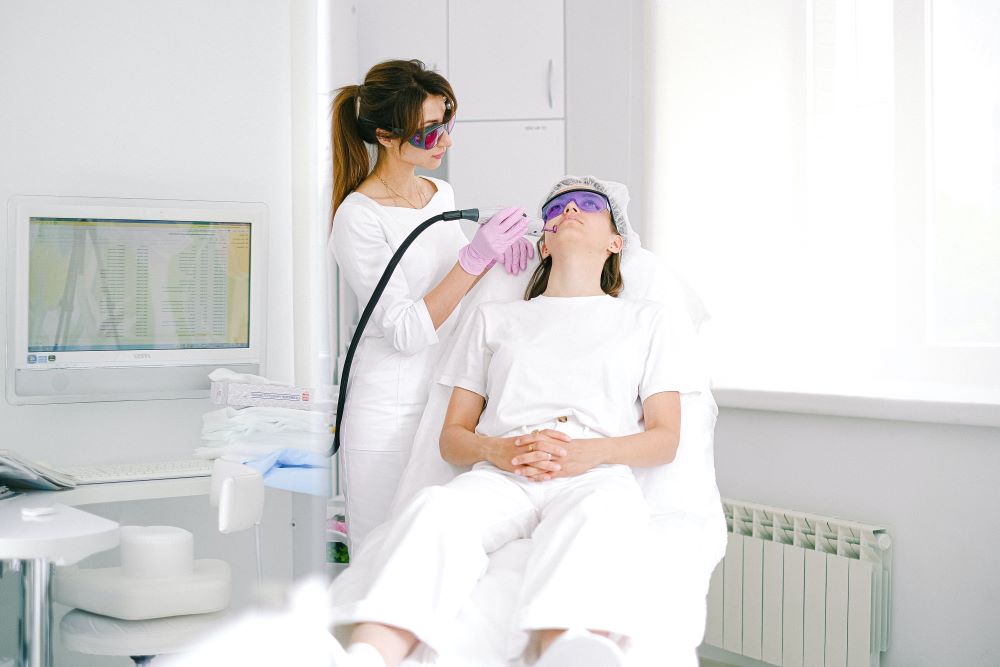Acne is a common skin condition that affects millions of people worldwide. While acne breakouts can be distressing, the resulting scars can have a lasting impact on one’s self-esteem. Fortunately, advancements in dermatological technology have led to the development of laser acne scar removal techniques. We are going to explore the effectiveness of laser treatments in reducing acne scars, the different types of lasers used, the procedure involved, potential side effects, and expected results.
I. Understanding Acne Scars
Before delving into the specifics of laser acne scar removal, it’s essential to comprehend the nature of acne scars. Acne scars are a result of the body’s attempt to heal the skin after severe acne breakouts. The healing process may lead to the formation of uneven, discolored, or indented scars, which can persist long after the acne has subsided. These scars can be categorized as atrophic (depressed scars), hypertrophic (raised scars), or keloid scars.
II. The Power of Laser Technology
Laser technology has revolutionized the field of dermatology, offering a promising solution for reducing acne scars. Laser treatments work by targeting the damaged skin cells, stimulating collagen production, and promoting the growth of healthier skin tissue. The controlled delivery of laser energy can effectively resurface the skin, reducing the appearance of scars and improving overall skin texture.
III. Types of Lasers Used
Several types of lasers are employed in acne scar removal treatments, each with its unique properties and benefits. The most commonly used lasers include:
- Fractional CO2 Lasers: These lasers deliver precise, high-energy beams that vaporize damaged skin tissue. Fractional CO2 lasers are effective for treating deep acne scars and can significantly improve skin texture and tone.
- Erbium YAG Lasers: These lasers are particularly suitable for treating superficial acne scars. They work by removing the outermost layer of the skin, promoting the growth of healthier tissue. Erbium YAG lasers offer minimal downtime and a shorter recovery period.
- Pulsed Dye Lasers: This type of laser targets the redness and discoloration associated with acne scars. Pulsed dye lasers emit concentrated light energy, which is absorbed by blood vessels, reducing their visibility and enhancing the overall appearance of the skin.
IV. The Procedure
Laser acne scar removal typically involves multiple treatment sessions spaced several weeks apart. Before the procedure, a dermatologist will assess the individual’s skin type, scar severity, and overall health to determine the most suitable laser treatment. During the treatment, the patient may be given a local anesthetic or numbing cream to minimize discomfort. The dermatologist will then use the selected laser to precisely target the acne scars, delivering the appropriate energy levels to stimulate collagen production and remove damaged tissue.
V. Potential Side Effects
While laser acne scar removal is generally safe, it is crucial to be aware of potential side effects. Temporary side effects may include redness, swelling, and mild discomfort, which usually subside within a few days. In rare cases, more severe side effects such as infection, scarring, or changes in pigmentation may occur. To minimize the risk of complications, it is essential to choose a qualified and experienced dermatologist who will carefully evaluate your skin and tailor the treatment to your specific needs.
VI. Expected Results and Aftercare
The effectiveness of laser acne scar removal can vary depending on factors such as scar type, treatment intensity, and individual healing capabilities. However, many patients experience significant improvement in their acne scars after a series of laser treatments. The treated skin may appear red and slightly inflamed immediately following the procedure, but this usually subsides within a few days.
It is important to follow the dermatologist’s aftercare instructions to ensure optimal healing and minimize the risk of complications. These instructions may include:
- Protecting the treated area from sun exposure: Sun protection is crucial as the skin becomes more sensitive to UV rays after laser treatment. Applying broad-spectrum sunscreen and wearing protective clothing and hats can help prevent hyperpigmentation and promote proper healing.
- Avoid harsh skincare products: It is recommended to use gentle, non-irritating cleansers and moisturizers during the healing process. Harsh chemicals or exfoliants can disrupt the skin’s healing process and worsen any potential side effects.
- Keeping the skin moisturized: Proper hydration is essential for the healing and regeneration of the skin. Applying a moisturizer recommended by the dermatologist can help maintain skin moisture and promote a smoother complexion.
- Following a healthy skincare routine: Consistency in skincare is key to achieving long-lasting results. Incorporating a routine that includes cleansing, moisturizing, and protecting the skin can help maintain the improvements gained from laser treatment.
Laser acne scar removal has emerged as a promising solution for individuals seeking to reduce the appearance of acne scars and improve their overall skin texture. With advancements in laser technology, dermatologists can now offer effective treatments that target specific scar types and yield noticeable results.
While the procedure may involve multiple sessions and require proper aftercare, the potential benefits make it a worthwhile consideration for those struggling with acne scars. By consulting with a qualified dermatologist and following their guidance, individuals can embark on a journey towards clearer, more confident skin.
